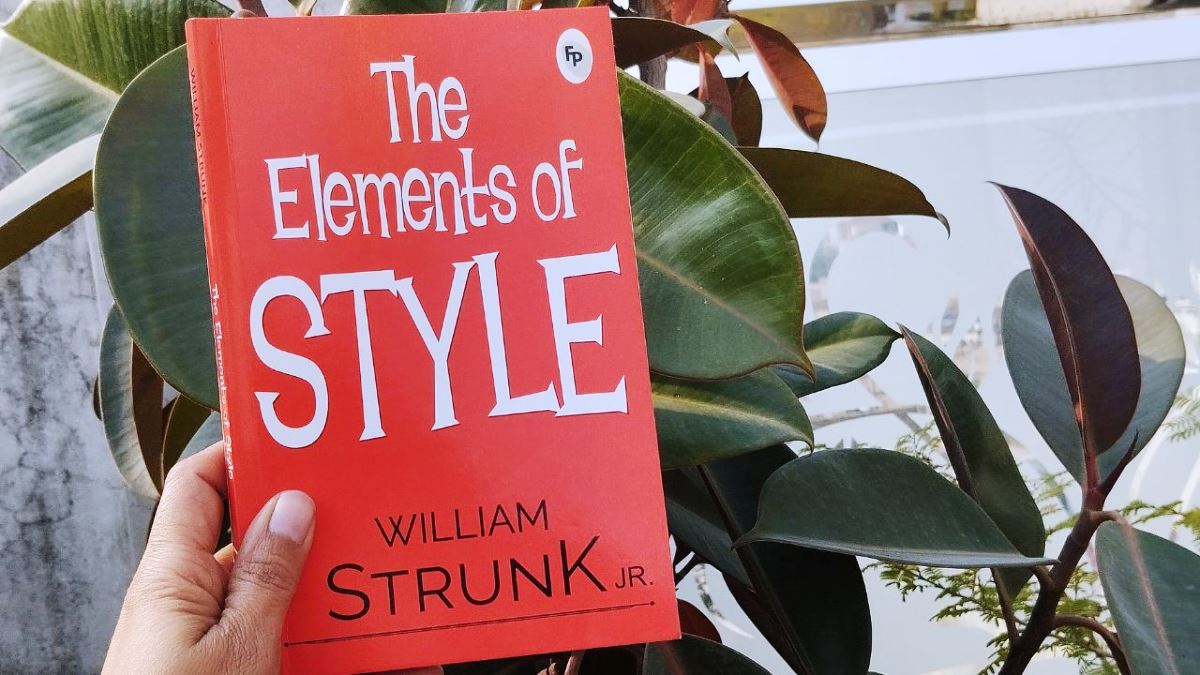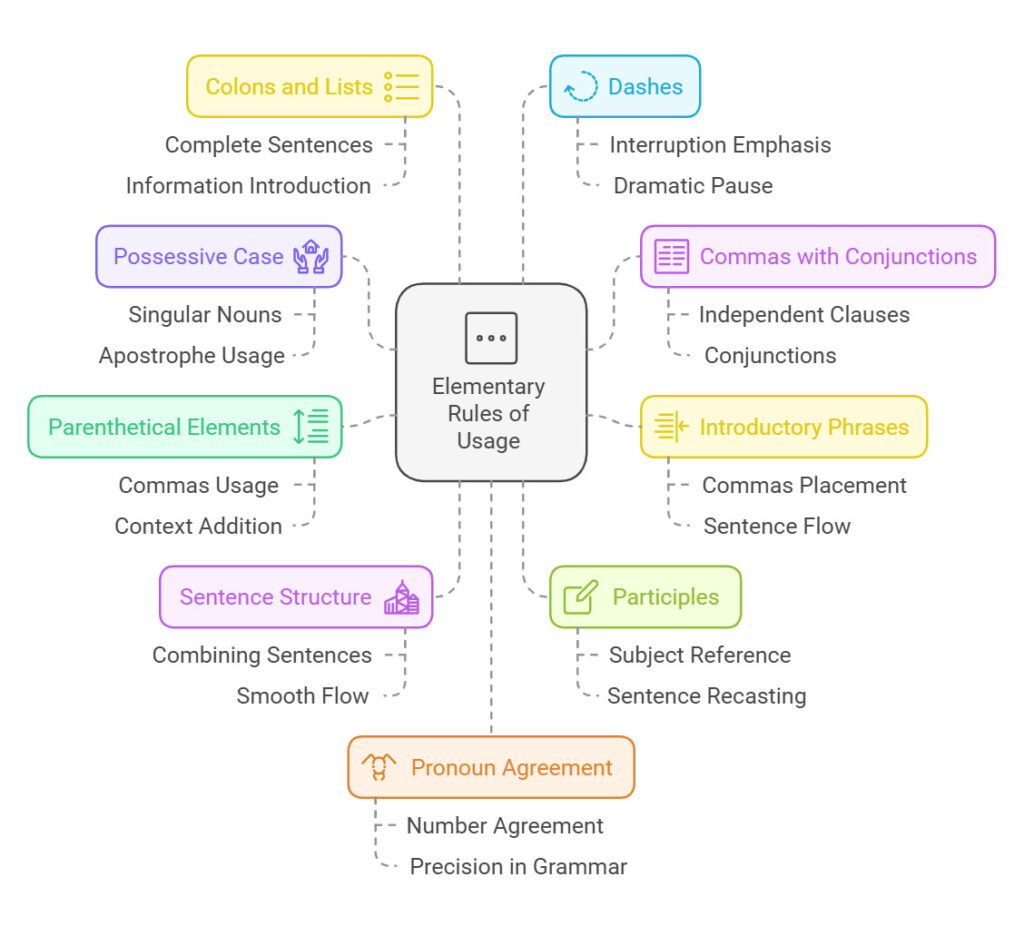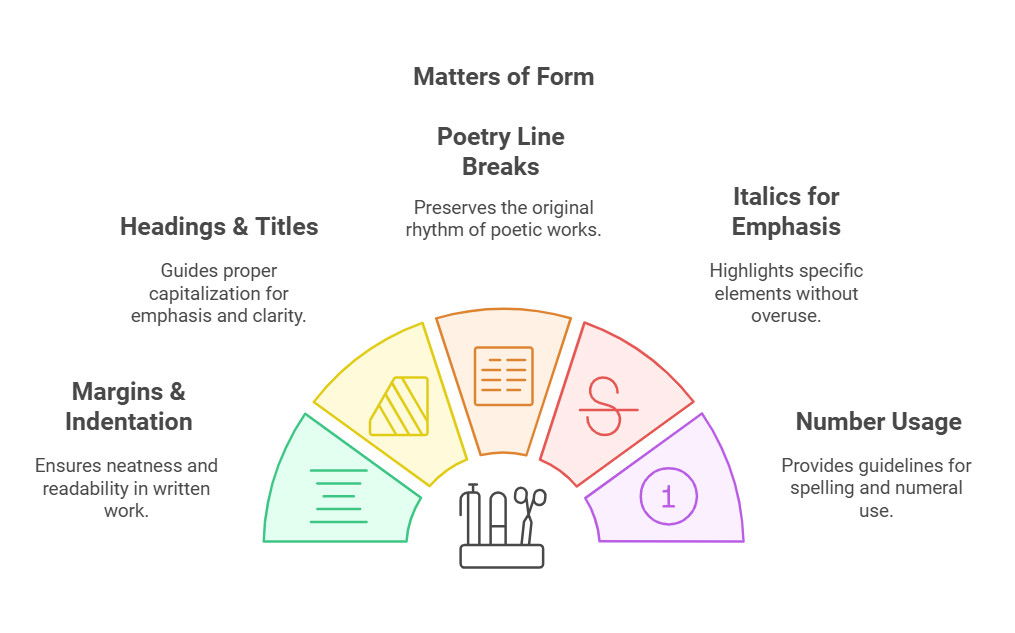There’s one book that’s completely transformed how I write: “The Elements of Style” by William Strunk.
Whether you’re grinding out your first blog post or you’ve been writing for 20+ years, this book is your secret weapon. It’s the writing equivalent of finding a cheat code.
This isn’t some boring academic textbook. It’s a no-BS guide that shows you exactly how to make your writing punch harder than Mike Tyson in his prime. It’s a must-read book.
And the best part?
It works for EVERYONE:
- Students struggling with essays
- Bloggers trying to build an audience
- Journalists on tight deadlines
Use Our Free Best Books On Any Topic Generator To Find Your Next Great Read

- Elementary Rules of Usage: Simplified for Easy Understanding
- 1. Use the Possessive Case for Singular Nouns
- 2. Use a Comma to Join Two Independent Clauses with a Conjunction
- 3. Place a Comma After an Introductory Phrase
- 4. Enclose Parenthetical Elements in Commas
- 5. Do Not Break Sentences in Two
- 6. Beginning with Participles
- 7. Use a Colon to Introduce a List or Explanation
- 8. Use a Dash to Emphasize an Interruption or Thought
- 9. Pronouns Must Agree in Number with Their Antecedents
- Elementary Principles of Composition: A Short and Precise Guide
- 1. Make the Paragraph the Unit of Composition
- 2. Use the Active Voice
- 3. Put Statements in Positive Form
- 4. Omit Needless Words
- 5. Avoid a Succession of Loose Sentences
- 6. Express Coordinate Ideas in Similar Form
- 7. Keep Related Words Together
- 8. Place the Emphatic Words of a Sentence at the End
- Matters of form
- 1. Use the Right Margins and Indentation
- 2. Headings and Titles
- 3. Break Lines for Poetry
- 4. Use Italics for Emphasis
- 5. Keep Numbers Simple
- Words and Expressions Commonly Misused
- 1. Avoid Redundancies
- 2. Be Precise with Words
- 3. Limit Overused Phrases
- 4. Distinguish Similar Words
- 5. Cut Unnecessary Fillers
- Spelling
- References
Elementary Rules of Usage: Simplified for Easy Understanding
These ‘elementary rules of usage’ focus on correct sentence structure and punctuation. Let’s break them down with simple explanations and relatable examples.
1. Use the Possessive Case for Singular Nouns
When a singular noun owns something, add an apostrophe followed by an s.
- Incorrect: The dogs bone was buried in the yard.
- Correct: The dog’s bone was buried in the yard.
Even if the singular noun ends in s, like “James,” the book suggests writing it as James’s book, though modern usage sometimes allows James’ book.
The pronominal possessives hers, its, theirs, yours, and oneself do not have an apostrophe.
2. Use a Comma to Join Two Independent Clauses with a Conjunction
When there are three or more terms with a single conjunction, use a comma after each term, except for the last. When two complete sentences are joined by a conjunction (and, but, or, so, yet), use a comma before the conjunction.
- Incorrect: I went to the park and I saw a beautiful sunset.
- Correct: I went to the park, and I saw a beautiful sunset.
The comma helps separate the ideas clearly, making the sentence easier to read.
3. Place a Comma After an Introductory Phrase
Add a comma before the main part if your sentence starts with a phrase that sets the stage.
- Incorrect: After the meeting we went out for lunch.
- Correct: After the meeting, we went out for lunch.
This slight pause ensures the sentence flows naturally.
4. Enclose Parenthetical Elements in Commas
It is often difficult to determine whether a single word, such as however, or a brief phase, is or isn’t parenthetic.
When more information is added to a sentence, separate it with commas.
- Incorrect: My brother who lives in New York is visiting this weekend.
- Correct: My brother, who lives in New York, is visiting this weekend.
The commas signal that the information is non-essential but adds context.
The first comma should be placed before the conjunction if a conjunction precedes the expression.
- He saw as coming, and unaware that we had learned of his treachery, greeted us with a smile.
5. Do Not Break Sentences in Two
Avoid making a single idea into two sentences. This might confuse the reader.
- Incorrect: The house was old and creaky. But it had a lot of charm.
- Correct: The house was old and creaky, but it had a lot of charm.
The second version sounds choppy and awkward. Combining them creates a smoother flow.
6. Beginning with Participles
A participial phrase at the beginning of a sentence must refer to the grammatical subject.
- Walking slowly down the road, he saw a woman accompanied by two children.
- He saw a woman accompanied by two children, walking slowly down the road.
The word walking refers to the subject of the sentence, not to the woman. If the writer wishes to make it refer to the woman, he must recast the sentence.
7. Use a Colon to Introduce a List or Explanation
A colon signals that more information is coming. Use it after a complete sentence.
- Incorrect: I need to buy: eggs, milk, and bread.
- Correct: I need to buy three things: eggs, milk, and bread.
The sentence before the colon should be able to stand alone as a complete thought.
8. Use a Dash to Emphasize an Interruption or Thought
Dashes make your sentence stand out or show a dramatic pause.
- Incorrect: She was about to leave, but then the phone rang.
- Correct: She was about to leave—but then the phone rang.
The dash adds drama and draws attention to the interruption.
9. Pronouns Must Agree in Number with Their Antecedents
If the noun being replaced by a pronoun is singular, the pronoun should also be singular.
- Incorrect: Each student must bring their notebook.
- Correct: Each student must bring his or her notebook.
While most people use “their” nowadays, Strunk focuses on being precise with grammar.

Elementary Principles of Composition: A Short and Precise Guide
1. Make the Paragraph the Unit of Composition
Each paragraph should focus on one idea or topic. Start with a clear topic sentence and develop it with supporting details.
- Incorrect: A paragraph discussing apples suddenly talks about oranges.
- Correct: Keep all details in the paragraph related to apples. Discuss oranges in a separate paragraph.
2. Use the Active Voice
Active voice makes sentences stronger and more direct.
- Passive: The cake was baked by Sarah.
- Active: Sarah baked the cake.
3. Put Statements in Positive Form
Avoid negatives where a positive statement is possible.
- Negative: He was not very efficient.
- Positive: He was inefficient.
4. Omit Needless Words
Say more with less. Avoid redundancy and filler words.
- Wordy: The fact that he was late was unavoidable.
- Concise: His lateness was unavoidable.
5. Avoid a Succession of Loose Sentences
Don’t string multiple independent clauses with conjunctions. Vary sentence structure for better flow.
- Loose: I went to the store, and I bought apples, and then I came home.
- Improved: I went to the store, bought apples, and returned home.
6. Express Coordinate Ideas in Similar Form
Use parallel structure for clarity and rhythm.
- Incorrect: She likes hiking, to swim, and bike riding.
- Correct: She likes hiking, swimming, and biking.
7. Keep Related Words Together
Position words in a sentence so they clearly show their relationship.
- Incorrect: He only gave her a book for her birthday.
- Correct: He gave her only a book for her birthday.
8. Place the Emphatic Words of a Sentence at the End
End a sentence with the most important idea or word for emphasis.
- Less emphatic: In the distance, we saw the mountains.
- More emphatic: We saw the mountains in the distance.
Matters of form
1. Use the Right Margins and Indentation
Start new paragraphs with proper indentation or space them apart. This keeps your work neat and easy to read.
2. Headings and Titles
Capitalize keywords in titles. Avoid using all caps unless necessary.
- Correct: The Beauty of Simplicity
- Incorrect: THE BEAUTY OF SIMPLICITY
3. Break Lines for Poetry
When quoting poetry, keep line breaks as they appear in the original to preserve its rhythm.
4. Use Italics for Emphasis
Use italics (or underlining in handwritten text) for book titles, foreign words, or subtle emphasis. Don’t overuse it!
5. Keep Numbers Simple
Spell out numbers up to 99. Use numerals for larger numbers. Don’t spell out dates or other serial numbers. Write in figures or in Roman notion.
- Correct: Forty-five people attended.
- Correct: There were 200 attendees.

Words and Expressions Commonly Misused
Strunk’s Chapter 5 warns against using words or phrases incorrectly or unnecessarily. Here’s a quick guide to avoid common pitfalls:
1. Avoid Redundancies
Using extra words that don’t add value weakens your writing.
- Redundant: At this point in time
- Correct: Now
2. Be Precise with Words
Choose words that mean exactly what you intend.
- Misused: Effect instead of Affect
- Correct: The weather affects my mood.
3. Limit Overused Phrases
Clichés or vague expressions dilute meaning.
- Weak: Needless to say
- Better: Omit the phrase and get straight to the point.
4. Distinguish Similar Words
Some words look or sound alike but aren’t interchangeable.
- Misused: Comprised of
- Correct: Composed of
5. Cut Unnecessary Fillers
Eliminate phrases that don’t add meaning.
- Wordy: The fact that she arrived late was frustrating.
- Better: Her late arrival was frustrating.
Related: Everybody Writes Summary (Ann Handley)
Spelling
Spelling plays an important role in writing. Good writing goes beyond just crafting compelling sentences. It’s also about accuracy, and spelling is a key component. Even seasoned writers can fall victim to common spelling mistakes.
Strunk provides a list of commonly misspelled words.
Here’s a list of words that often trip up writers,
- accidentally
- advice
- affect
- beginning
- believe
- benefit
- challenge
- criticize
- deceive
- definite
- describe
- despise
- develop
- disappoint
- ecstasy
- effect
- existence
- formerly
- humorous
- hypocrisy
- immediately
- incidentally
- latter
- led
- lose
- marriage
- mischief
- murmur
- necessary
- occurred
- parallel
- Philip
- playwright
- preceding
- prejudice
- principal
- privilege
- pursue
- repetition
- rhyme
- rhythm
- ridiculous
- sacrilegious
- seize
- separate
- shepherd
- siege
- similar
- simile
- too
- tragedy
- tries
- undoubtedly
- until
Note that before ed and ing, the single consonant (apart from v) preceded by a stressed short vowel is doubled. Ex. planned, letting, beginning (coming is an exception.)
Write to-day, to-morrow (but not together) with hyphen.
Write anyone, every one, some one , some time( except in the sence of formerly) as two words.
Beyond just memorizing lists, here are some practical strategies to enhance your spelling:
- The more you read, the more you’ll subconsciously absorb correct spellings.
- Always proofread your work, preferably after taking a break. Read aloud to catch errors your eyes might miss.
- Spell check is a useful tool, but it doesn’t catch everything (especially homophones like “there,” “their,” and “they’re”).
- If you frequently misspell certain words, keep a personal list and review it frequently.
Spelling takes time and effort, but it’s worth it for any writer.
References
- Skarda, Erin (August 16, 2011). “Elements of Style“. All-Time 100 Nonfiction Books. Time, Inc. Retrieved 2014-05-14.
- Roberts, Sam (21 April 2009). “‘The Elements of Style’ Turns 50”. The New York Times. Retrieved 2015-04-10.
- E. B. White, “Letter from the East”, The New Yorker, July 27, 1957, 33:23:35–36, 41–43
- Strunk, William Jr.; White, E. B. (2009). The Elements of Style (5th ed.). Boston: Allyn and Bacon. p. xiii. ISBN 978-0-205-31342 Strunk and White (2009), p. x.
